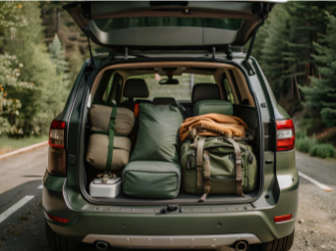If you are a title holder of a new, pre-owned, modified or re-built motor vehicle, you must register it at your relevant registering authority to get a registration certificate. When it has been registered and licensed, you’ll get a motor vehicle licence disc.
Registration and licensing could take up to a few days and the cost will depend on your province’s licensing office.
Here are the guidelines, as provided by the Department of Transport.
You must register and license your motor vehicle within 21 days after a change of ownership. If you do not register it, you’ll have to pay arrears and penalties. The motor vehicle registration is recorded on the national traffic information system (eNaTIS).
Your vehicle's registration becomes null and void if:
- The vehicle licence disc has not been renewed for more than four years
- The vehicle was involved in an accident and has been declared permanently unfit for use
- You sold the vehicle (changed ownership)
- Your vehicle has been repossessed for more than 31 days
- A deregistration certificate has been issued.
Register a new vehicle:
To register a new vehicle, go to your appropriate registering authority and submit the following:
- Your identity document (ID)
- Proof of postal and residential address, e.g.utility account. If the utility bill is not in your name, the owner of the bill must make an affidavit declaring that you live at the address and the utility bill must be attached to the affidavit.
- If you live in an informal settlement, you must bring a letter with an official date stamp from the ward councillor confirming your postal and residential address
- The manufacturer's certificate containing all the relevant details of the vehicle
- A roadworthy certificate, if the vehicle is a heavy load.
- Complete the application for Registration and Licensing of Motor Vehicle (RLV) form (you can get one at a licensing department, or download one here).
Register a used vehicle:
To register a pre-owned (used) vehicle, the seller must first complete and submit a notification of change of ownership (NCO) form, which gives notification of change of ownership. (If you’re on the hunt for a previously loved vehicle, don’t forget to check out Portal, where you can find over 4000 vehicles to choose from. Click here to start shopping)
Go to your relevant motor vehicle registration authority and submit the following:
- Your identity document (ID)
- Proof of postal and residential address eg utility account. If the utility bill is not in your name, the owner of the bill must make an affidavit declaring that you live at the address and the utility bill must be attached to the affidavit.
- If you stay at an informal settlement, you must bring a letter with an official date stamp from the ward councillor confirming your postal and residential address
- The vehicle registration certificate (in the seller's name)
- The certificate of roadworthiness if the current certificate is older than 60 days
- Proof of purchase of the vehicle
- A valid motor vehicle licence (ensure that the licence fees for the vehicle are up to date).
Complete the application for registration and licensing of motor vehicle (RLV) form.
Register a vehicle built up from parts:
To register a vehicle built up from parts, go to your nearest motor vehicle registration authority and submit the following:
- Your identity document (ID)
- Proof of postal and residential address e.g. utility account. If the utility bill is not in your name, the owner of the bill must make an affidavit declaring that you live at the address and the utility bill must be attached to the affidavit.
- If you stay at an informal settlement, you must bring a letter with an official date stamp from the ward councillor confirming your postal and residential address
- An affidavit confirming where the parts came from and what was done to the car (form SOA)
- Request for police clearance (form RPC)
- Request for police identification (form RPI)
- De-registration certificate (if the vehicle was deregistered)
- A weighbridge (mass measuring) certificate
- Proof of title ownership
- Letter of authority (if applicable)
The provincial help desk will then introduce the vehicle record on eNaTIS. A request for police clearance (form RPC) must then be submitted. Aroadworthy test must be performed on the vehicle. Complete the Application for Registration and Licensing of Motor Vehicle form (RLV).
Register a modified vehicle:
To register a modified vehicle, go to your nearest motor vehicle registration authority and submit:
- Your identity document (ID)
- Proof of postal and residential address, e.g. utility account. If the utility bill is not in your name, the owner of the bill must make an affidavit declaring that you live at the address and the utility bill must be attached to the affidavit
- If you live in an informal settlement, you must bring a letter with an official date stamp from the ward councillor confirming your postal and residential address
- An affidavit confirming where the parts came from and what was done to the car (form SOA)
- Request for police clearance (form RPC)
- Request for police identification (form RPI)
- De-registration certificate (if the vehicle was deregistered)
- A weighbridge (mass measuring) certificate
- Proof of title of ownership
- Roadworthy certificate
- Letter of authority (if applicable).
Manufacturer's certificate or previous registration certificate or affidavit if the registration certificate cannot be provided. Complete the application for registration and licensing of motor vehicle form (RLV).
2018 Hyundai Elantra review
Used car shopping? Includes Extended Warranty, and other tips


